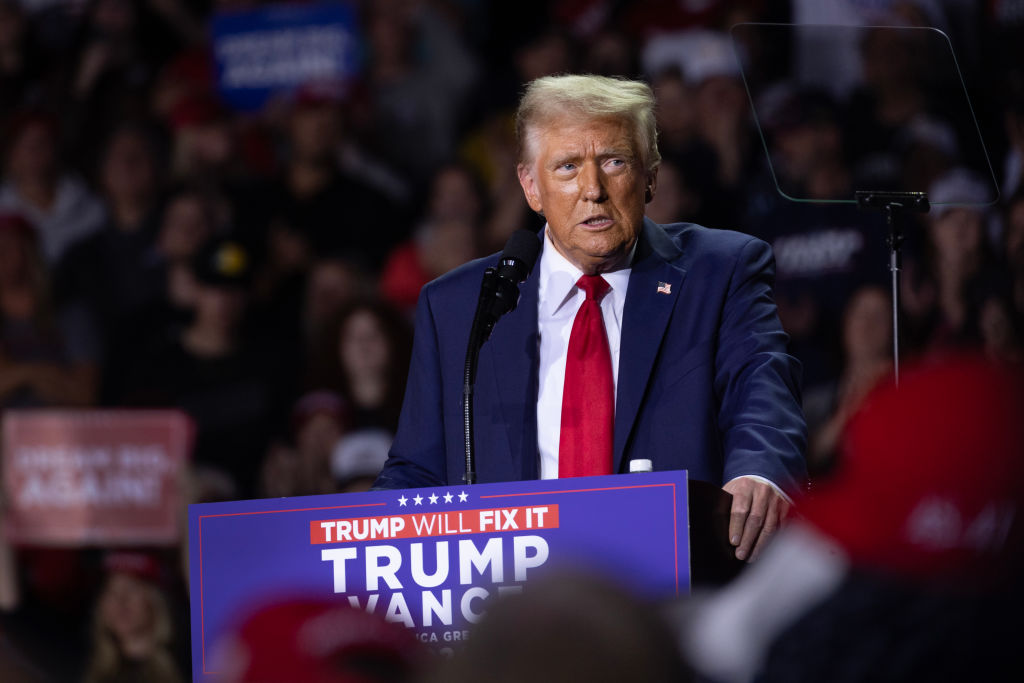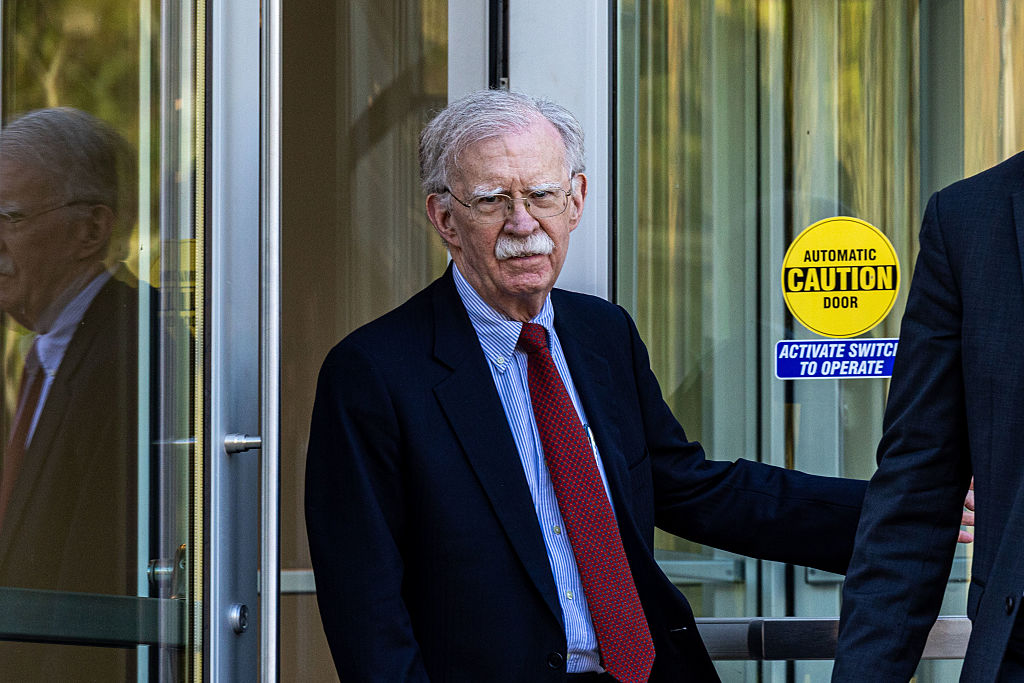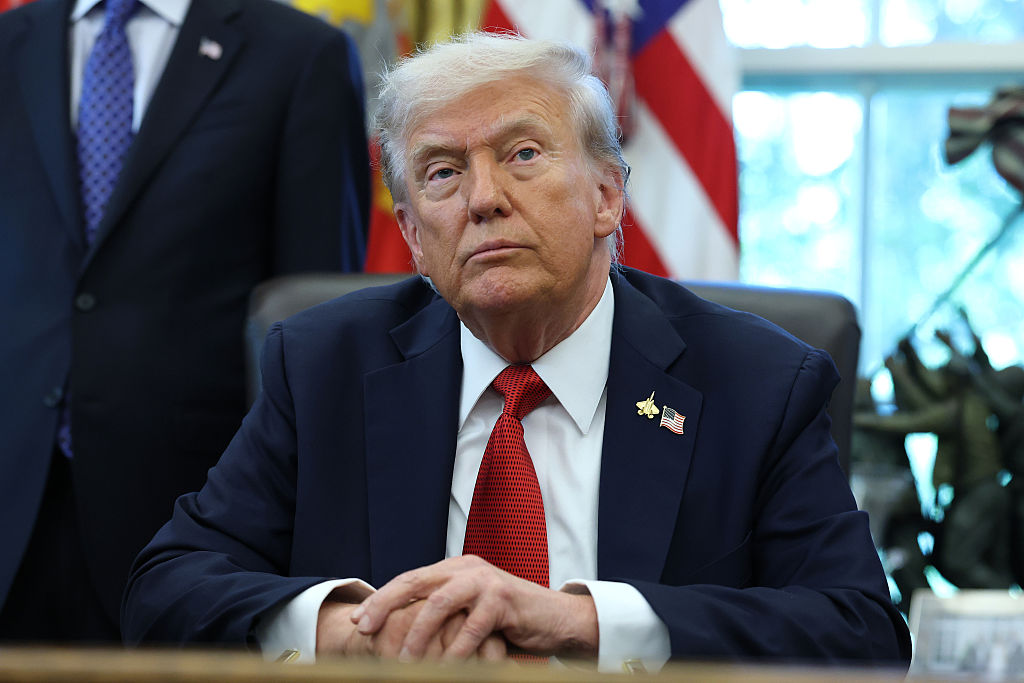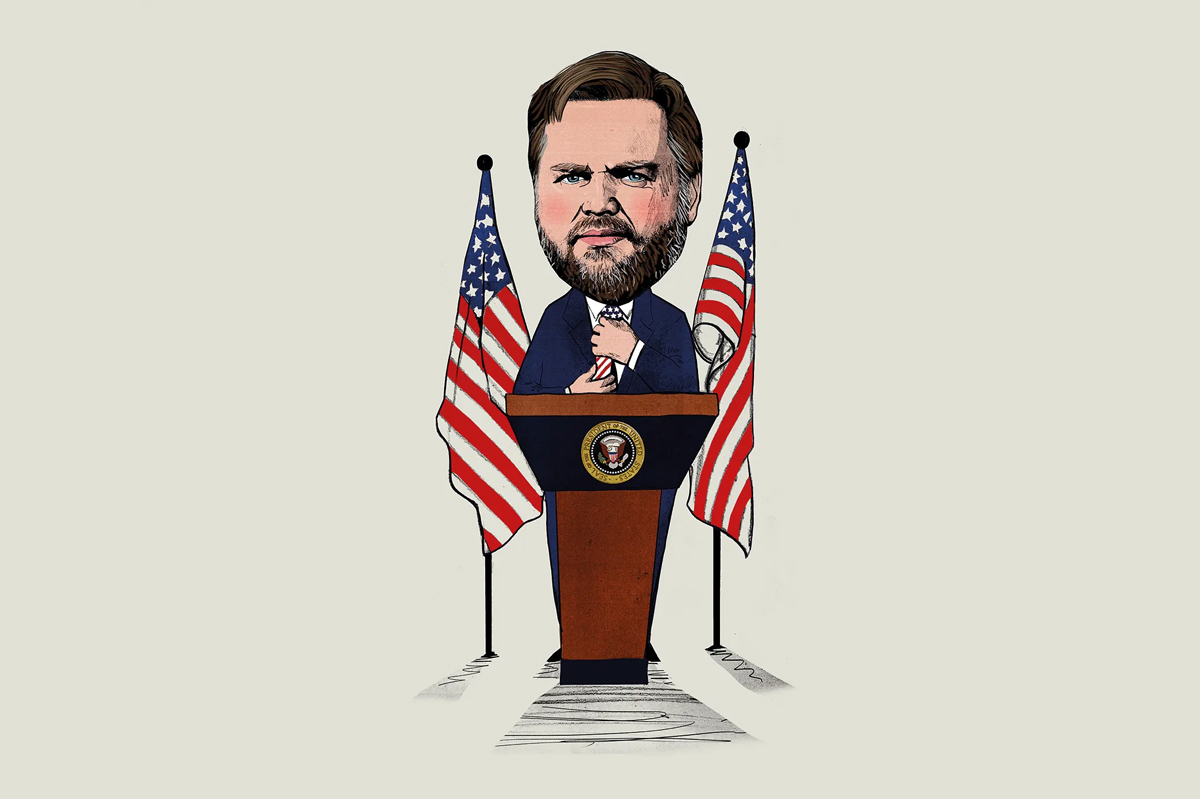We’re sitting at the airport bar in Lansing, Michigan when we notice a MAGA hat next to the cash register. “What’s that?” my husband asks the black bartender. The bartender curls up the corners of his mouth and says, “I’m a Trump supporter.”
He tells us that he was raised to be a Democrat by his grandmother and his mother but found himself disillusioned with the Obama administration and the bailouts of Wall Street and the auto industry. “They got their annual bonuses and their stock buybacks. What did we get? We got the bill. That was my breaking point.”
“I got tired of hearing the same shit every four years,” he asserted. “Now I wear my hat out and people look at me like, ‘a black Trump supporter?’’’
On election night at a Mike Rogers for Senate watch party in Novi, a member of the “Auto Workers for Trump” coalition told me about his discontent with United Auto Workers leadership for endorsing Vice President Kamala Harris without members’ input. He works at Ford, where he passed out his own pro-Trump literature after he saw union leaders distributing pamphlets for Harris.
“They don’t care that we like Trump; they don’t care when we tell them what an electric-vehicle mandate is going to do to our jobs,” he said. “They don’t actually care about any of us.”
This year, Trump was a voice for Michiganders who have been consistently disappointed by political leaders and institutions that don’t really represent their interests. Democrats took their support for granted or called them “garbage” when they voted for Republicans; their unions made political decisions for them, and the media told them how they were supposed to think.
This mirrored the sentiment among voters when Trump first won Michigan in 2016 by 0.3 points, breaking through the blue wall as a change agent for working-class folks who had been left behind by the system and overcoming Hillary Clinton’s support with urban and suburban voters. In 2016, though, Trump had the benefit of a well-organized state Republican Party under the leadership of Ronna McDaniel, who intimately understood the state and single-handedly raised $20 million for down-ballot races so that the Republican National Committee could focus on the presidential election.
When McDaniel left to take over the Republican National Committee in 2017, it preceded a near-collapse of the Michigan GOP. Grassroots activists who were loyal to Trump but didn’t have much experience running a party machine eventually took over leadership, leading to a decline in fundraising and organization. The Trump campaign was practically on its own in 2020 and running against a Democratic candidate, Joe Biden, with more credibility with the white working class. Biden won 56 percent of union households and got strong support from black voters and young voters.
But conditions were decidedly different this time around. Earlier this year, the state party finally ousted its “incompetent” — as some former party officials described her to me — chairwoman Kristina Karamo in favor of Pete Hoekstra, a former congressman and ambassador. And not confident that the Michigan GOP would recover in time for the 2024 elections, which also featured an opportunity for a Senate seat pickup, big party donors like former education secretary Betsy DeVos and former Michigan GOP chairman Ron Weiser spent heavily to create their own candidate-support infrastructure outside the state party. Groups such as Elon Musk’s America PAC and Charlie Kirk’s Turning Point Action similarly helped boost Trump’s ground game in Michigan and other key swing states.
On the issues, Trump was once again the salve for voters getting the brunt of the unpopular Biden administration. In 2020, Biden promised a return to normalcy, to get things humming along again. Instead, it seemed to these voters that things got remarkably worse. The economy, they believed, added jobs for foreign workers, inflation remained higher than it was when Biden took office, prices rose more than 20 percent in the last four years, illegal immigrants were eating up public services and contributing to a housing shortage and crime was out of control. Nationally, about three-quarters of voters said the country was on the wrong track. Only 7 percent were “enthusiastic” about the state of the country, while 43 percent were “dissatisfied” and 29 percent were downright “angry.” According to the Associated Press, eight in ten voters wanted a “substantial change” in how the country is run and half said they wanted complete and total upheaval.
Trump was there to “fix it,” he promised Michigan voters at a rally in Grand Rapids on election eve.
The Trump campaign’s focus on the economy and immigration — the top two issues influencing voters — helped him regain not only the Rust Belt’s white working class; he added to his coalition with gains in nearly every demographic. Trump performed four points better with black men in Michigan than he did in 2020 and five points better than in 2016. Nationally, Trump captured 13 percent of the black vote — including about three in ten young black men — and 45 percent of Latinos. In Michigan, Trump won 60 percent of Latino voters, a thirty-six-point swing. Trump also won back youth voters in the state from Biden, grabbing 51 percent of voters under the age of thirty. About half of the crowd at his final rally in Grand Rapids appeared to be young people.
These once reliably Democratic groups abandoned a party obsessed with identity politics in favor of someone who had a proven track record on the issues that mattered most to them. Issues, not vibes. A significant portion of these voters, even if they didn’t outright vote for Trump, abandoned the Democrats and Vice President Kamala Harris. Harris failed to explain her policy positions to voters and, arguably more importantly, did not say what she would do differently than Biden, even while casting herself as the choice for the future. Her focus on abortion and claims that democracy was at stake, arguing Trump is a fascist, didn’t resonate with voters who were struggling to afford food.
Additionally, Michigan voters cited two state-specific issues during exit polls: a possible electric-vehicle mandate and the Israel-Hamas war.
When Harris was a senator, she cosponsored a bill that would have required all new car sales to be zero-emission vehicles by 2040, and the Biden-Harris administration pushed through an Environmental Protection Agency rule that would force auto manufacturers to scale back production of gas-powered vehicles. These policies sound a death knell for present-day auto workers. Ford previously scaled back its EV production as demand for the vehicles stalled and the cars proved more expensive to produce. Without massive subsidies, US auto makers probably wouldn’t survive the transition, which would threaten the jobs of nearly 200,000 auto workers in Michigan and the families relying on them. Auto Workers for Trump president Brian Pannebecker, who called out the UAW for its endorsement of Harris, was a mainstay on the campaign trail with Trump and appeared at his final rally in Grand Rapids. Even Democratic representative Elissa Slotkin ran away from the EV issue in the final weeks of her winning Senate campaign, aware it was politically toxic.
Trump, meanwhile, has promised to use tariffs to keep American auto jobs and make locally manufactured vehicles more attractive to consumers. He warned earlier this year that it would be a “bloodbath” for the auto industry if the Biden-Harris administration were put in charge for another four years, comments that were misconstrued by the Democrats and the media, who accused him of threatening violence. “Trump told them exactly what would happen to us,” the auto worker at Rogers’s election night party said to me. “The EV mandate would kill us.”
Harris also struggled with Michigan voters’ concerns about her approach to the Israel-Hamas war. She promised to continue Biden’s policy on the conflict as the Democrats’ progressive base begged for an arms embargo and immediate ceasefire, but spurned Jewish voters by passing over Pennsylvania governor Josh Shapiro as her running mate and by giving intermittent lip service to the Palestinian cause. She ran pro-Palestine ads in Michigan and pro- Israel ads in Pennsylvania, tossing out any trust she might have had with voters on the issue. As a result, Trump won Dearborn, an Arab-American stronghold in which Biden received 88 percent of the vote in 2020, as progressives defected to vote for third-party candidate Jill Stein. Trump also gained four points in Wayne County, which includes Detroit and Hamtramck. The Muslim mayor of Hamtramck, the only majority-Muslim city in the country, actually endorsed Trump, arguing that he had a better chance at ending the war and expressing distaste for Harris’s liberal cultural positions. Harris also dropped two percentage points with Michigan’s Jewish voters compared to Biden. Trump’s allies cleverly played into this division within the Democratic Party, running pro-Stein ads in Wisconsin and Michigan.
Finally, Trump has Catholics to thank for his run through the swing states. He doubled his support among Catholics over 2016, from a seven-point advantage over Clinton to fourteen points over Harris. In 2020, Trump won Catholics by only one point against the Catholic candidate Joe Biden. Catholic voters make up about 17 percent of the population in Michigan and they are typically a highly motivated voting bloc. Harris mistakenly thought she could eat into Trump’s share of the evangelical vote, which is traditionally conservative, while ignoring the typically more politically liberal Catholics. She skipped the Al Smith charity dinner and told a group of Christians that they were at the “wrong rally,” said that members of the Knights of Columbus should be excluded from federal judgeships and rejected religious exemptions for abortions. As Harris disregarded Catholics, Trump’s allies had worked fervently behind the scenes to increase turnout and support from them over the past four years.
Democrats were hopeful that Trump had burned votes in Michigan when he criticized Detroit while campaigning, repeatedly calling it a “mess” and likening it to a third-world country. Perhaps they hadn’t considered that the people who live there, although filled with pride for their city, want better for themselves and their neighbors.
In the end Trump won Michigan by some 1.5 points (about 83,000 votes) improving significantly on his 2016 victory there and obliterating Harris’s electoral path through the Rust Belt. He won it because he earned it, building a broad coalition by focusing on issues that mattered most to the state and its people and never taking anyone’s vote for granted.
This article was originally published in The Spectator’s December 2024 World edition.


























Leave a Reply